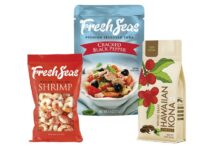The E-commerce packaging market is anticipated to reach approximately USD 1,51,797 million by 2029, according to a report by Precedence Research. In 2022, the Asia-Pacific region dominated the global market, contributing more than 52% of its total value.
E-commerce packaging involves the careful preparation of products to ensure secure delivery to their intended destinations. As online commerce continues to grow, various services in this field have become significant markets. Shipping boxes, in particular, have garnered significant attention within the e-commerce industry. The primary goal of e-commerce packaging is to protect products from potential damage during the entire process, from packaging to delivery. Effective packaging is also a crucial aspect of establishing a strong presence in any industry.
In the expanding world of e-commerce, efficient packaging solutions play a vital role in ensuring customer satisfaction and building brand loyalty. Properly packaged products not only protect them during transit but also enhance their presentation, creating a positive unboxing experience. Therefore, businesses must recognize the pivotal role of e-commerce packaging in preserving the quality of their products and ensuring their arrival in perfect condition. Additionally, effective packaging goes beyond protection and aesthetics; it serves as a powerful marketing tool, allowing businesses to leave a lasting impression on their target audience. Well-designed packaging with visually appealing elements can capture consumers’ attention and elevate the perceived value of the enclosed products.
By leveraging packaging as a strategic brand touchpoint, companies can establish a unique identity, reinforce their brand message, and differentiate themselves in the highly competitive e-commerce landscape. To harness the potential of e-commerce packaging, organizations should invest in innovative and eco-friendly packaging materials. This aligns with the growing consumer preference for sustainable practices and demonstrates a commitment to environmental responsibility. Adopting sustainable packaging solutions allows businesses to enhance their reputation, attract environmentally-conscious consumers, and contribute to a greener future.
The emergence of the e-commerce industry, coupled with increased access to fast and reliable internet, has unlocked significant market potential in e-commerce packaging. Additionally, due to rising concerns about plastic materials’ biodegradability, more companies are focusing on developing 100% organic and reusable packaging options. The convenience and popularity of online shopping, with its quick deliveries and competitive pricing, further drive the growth of the e-commerce packaging market. Other contributing factors include:
- The increasing trend of buying electronics online.
- The emphasis on sustainable packaging solutions.
- Evolving consumer preferences.
- The convenience of online shopping.
- The overall growth in internet and mobile device usage.
However, government regulations related to corrugated packaging services and concerns about plastic-based packaging solutions pose certain challenges to the market’s expansion.
Regional Strategies for E-Commerce Packaging Success: Insights from Leading Markets
The Asia-Pacific region emerged as a dominant force in the global e-commerce packaging market in 2020, accounting for over 52% of its total value. This share represents a significant increase from the previous five years, highlighting the remarkable growth of e-commerce in major Asian markets like China, Japan, and South Korea. These countries, known for their strong economies and technological advancements, have established themselves as some of the world’s largest and most developed markets for e-commerce packaging. Online shopping has become deeply ingrained in their culture, contributing to the region’s dominance. Moreover, the influence of e-commerce is expanding beyond these markets.
Countries in Southeast Asia, including Indonesia, Thailand, and Vietnam, are experiencing a surge in e-commerce adoption, with significant growth potential. Additionally, the Indian market, with its massive population and increasing internet penetration, is poised for substantial e-commerce growth in the next decade. This shift towards e-commerce is unique in these countries, as it skips a stage of retail development that typically involves the prevalence of supermarkets and hypermarkets. Instead, consumers have transitioned directly from traditional channels like street markets and small independent stores to online platforms.
The rise of the Asia-Pacific region as a powerhouse in e-commerce packaging signifies the region’s economic strength, technological advancement, and evolving consumer behavior. It presents lucrative opportunities for businesses in the sector and underlines the importance of adapting to the dynamic e-commerce landscape in this vibrant market.
China stands as the world’s largest individual market for e-commerce packaging, capturing nearly 38% of the global market value in 2020. Within the Asia-Pacific region, China’s share accounted for almost 73%, although this percentage slightly declined from nearly 77% five years ago. Meanwhile, other countries in the region, such as South Korea, have experienced growth in their e-commerce markets. The Chinese e-commerce market has witnessed rapid expansion over the past decade, despite internet penetration in the country being just under 60%. This growth can be attributed to the emergence of a prosperous urban consumer base and the increasing popularity of online purchases of luxury goods from overseas. These factors have propelled the e-commerce sector in China, contributing to its dominant position in the global market for e-commerce packaging.
As China’s consumer base becomes more affluent and urbanized, the demand for e-commerce packaging solutions is expected to continue its upward trajectory. The country presents significant opportunities for businesses operating in the e-commerce packaging industry, especially as online shopping and cross-border transactions gain popularity among Chinese consumers.
Exploring Opportunities in Packaging: Is the Online Glass Half Empty or Half Full?
The transition to online retail will continue to substantially influence packaging requirements and reshape the traditional converting value-chain landscape. E-commerce packaging necessitates meeting new and distinct demands, such as enhanced strength while reducing the emphasis on elaborate “on-the-shelf” printing. Rather than focusing on in-store appeal, there is a heightened focus on optimizing packaging for last-mile shipments, enhancing the consumer’s unboxing experience, and facilitating convenient and efficient product returns. With the rise of e-commerce, packaging plays a vital role in ensuring that products reach customers intact during the final leg of delivery. This calls for robust packaging solutions that can withstand the rigors of transportation and handling. The packaging design should also prioritize the consumer’s unboxing experience, creating an engaging and memorable moment when the product is unveiled. This can include creative box structures, personalized messages, or surprise elements.
Moreover, the ease and efficiency of product returns have become critical considerations in the e-commerce ecosystem. Packaging must facilitate hassle-free returns, providing convenient ways for customers to send back items while ensuring the protection and integrity of the package throughout the return process. To thrive in the evolving e-commerce landscape, packaging companies, and converters must adapt to these changing needs. This may involve developing specialized packaging materials and designs tailored for last-mile delivery, investing in innovative unboxing experiences, and implementing efficient return packaging systems. By aligning with the unique requirements of e-commerce, packaging providers can better serve online retailers and contribute to a seamless and satisfying customer journey.
While there is a pessimistic view that e-commerce will significantly diminish the traditional role of primary packaging designed to attract consumer interest in retail stores, it is essential to consider the evolving dynamics between online and offline channels. While the part of primary packaging in retail stores may change, it is unlikely to become a relic of the past in the foreseeable future. It is true that customers are becoming increasingly digitally savvy and can seamlessly navigate between online and offline channels. However, the purchase decision process is complex and influenced by various factors. While some customers may have already made up their minds before ordering or buying an item, there are still opportunities for primary packaging to capture attention and create a positive brand impression.
Primary packaging continues to serve functions beyond attracting consumer interest. It protects the product, conveys essential information, and showcases the brand identity. These functions remain relevant regardless of the sales channel. While utilitarian protective packaging may have a more significant role in e-commerce due to the emphasis on safe transit, the visual appeal and branding aspects of primary packaging are still essential for overall customer experience and differentiation. Moreover, it is essential to note that consumer behaviour and preferences are diverse.
While tools for easy replenishment and reordering may reduce impulse purchases in physical stores, there will still be consumers who enjoy the tactile experience of shopping in-store and are influenced by the packaging aesthetics and messaging. Rather than seeing a complete decline, it is likely that the role of primary packaging will evolve and adapt to the changing retail landscape. Packaging design and marketing strategies may need to be adjusted to cater to digital-savvy consumers’ unique needs and preferences. However, the importance of packaging in capturing attention, conveying information, and reinforcing brand identity will persist.
Demand Surge: Exploring the E-Commerce Packaging Boom during COVID-19
The global COVID-19 pandemic has triggered an unprecedented surge in demand for online delivery services, particularly in groceries and household items. This sudden shift in consumer behavior has created a tremendous opportunity for e-commerce companies to capitalize on the increased need for contactless shopping experiences. Recognizing the critical role that e-commerce plays in maintaining social distancing measures, governments worldwide have actively encouraged these companies to take the lead in mitigating the impact of the pandemic. As a result, the e-commerce sector is poised for substantial growth in the packaging industry. With more consumers relying on online platforms to fulfill their shopping needs, the volume of dispatched packages is expected to skyrocket. E-commerce companies, therefore, must prepare to meet this surge in demand by implementing efficient packaging and logistics strategies. This entails streamlining warehouse operations, optimizing order fulfillment processes, and partnering with reliable shipping providers to ensure timely and reliable deliveries.
During the height of the pandemic, e-commerce companies witnessed unprecedented two-fold growth, especially between April and June 2020. The lockdown measures implemented in various countries compelled consumers to turn to online shopping as a safer alternative to traditional retail. This surge in demand highlighted the importance of a robust e-commerce infrastructure that can handle increased order volumes without compromising delivery speed or customer satisfaction. To sustain this growth and capitalize on the momentum gained during the pandemic, e-commerce companies must adapt their strategies to the evolving market dynamics. Investing in cutting-edge technology and automation solutions can significantly enhance operational efficiency. Implementing advanced inventory management systems, utilizing artificial intelligence algorithms for demand forecasting, and optimizing last-mile delivery logistics are crucial to meeting ever-increasing customer expectations.
Moreover, e-commerce companies should prioritize the development of a seamless and intuitive user interface to enhance the online shopping experience. User-friendly websites and mobile applications, personalized recommendations, and easy-to-navigate product catalogs can foster customer loyalty and drive repeat purchases. By leveraging data analytics and customer insights, e-commerce companies can tailor their offerings and marketing campaigns to suit individual preferences, thereby establishing a competitive edge in the market. Given the surge in demand for e-commerce packaging, sustainability and eco-friendliness are paramount considerations. Consumers are becoming increasingly conscious of the environmental impact of excessive packaging waste. E-commerce companies must, therefore, adopt sustainable packaging practices by using recyclable materials, optimizing package sizes, and minimizing unnecessary fillers. Embracing green packaging solutions aligns with consumer expectations and helps reduce costs associated with packaging materials and waste management.
In conclusion, the COVID-19 pandemic has transformed the e-commerce landscape, catapulting online shopping to new heights. E-commerce companies have a unique opportunity to lead the way in meeting the surge in demand for online deliveries. By embracing efficient packaging and logistics strategies, leveraging technology and automation, and prioritizing customer experience, these companies can position themselves for sustained growth and success in the evolving business environment. Furthermore, adopting sustainable packaging practices will align with consumer values and contribute to a greener and more environmentally responsible future.



























